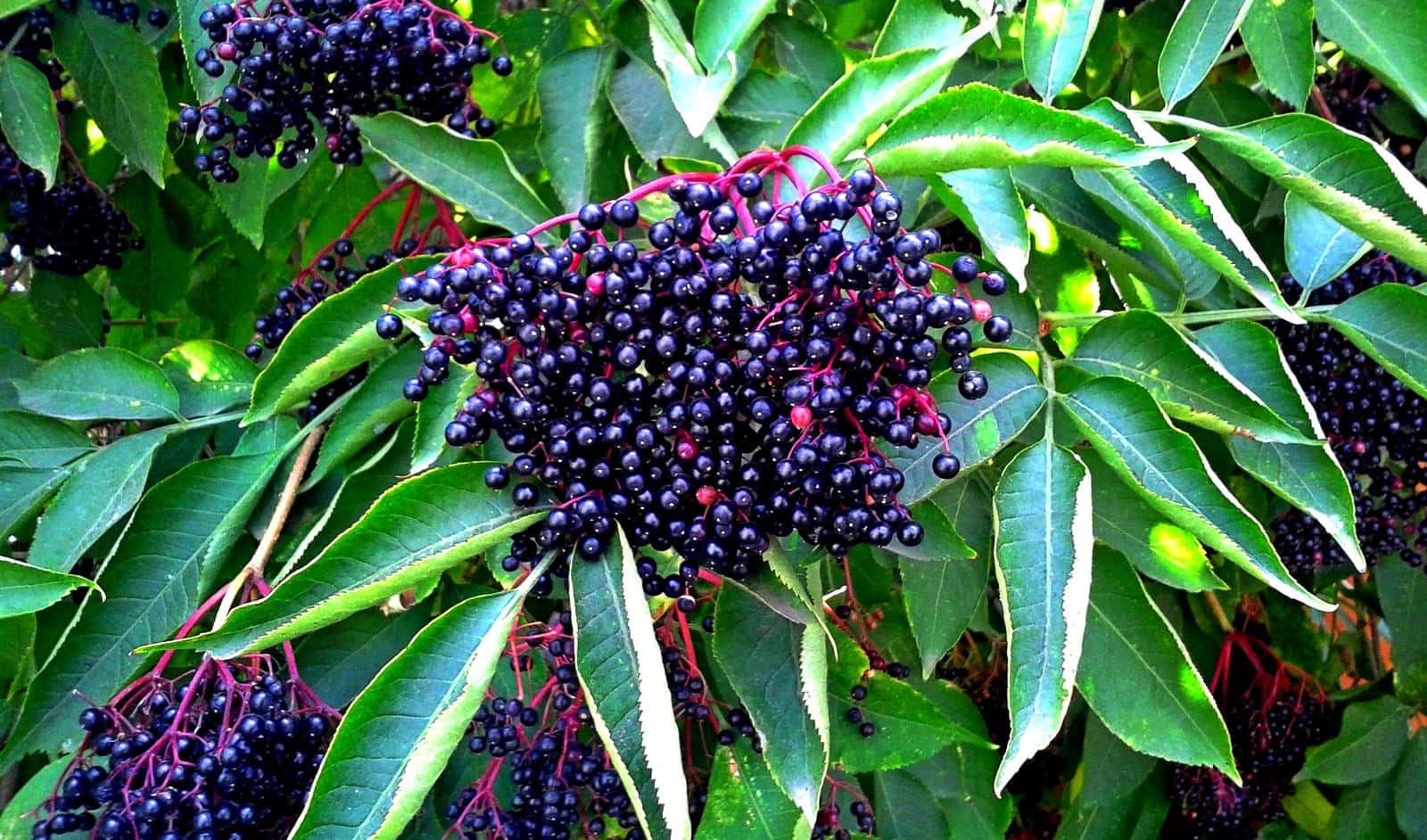
Sambucus canadensis, the American elderberry, is a large shrub native to much of North America. It bears white flowers early in the summer and dark, almost black, berries in the late summer.
Both the flowers and the berries have been used as food and for making wine. According to James Duke, “Elder Blow [flower] wine is something special, delicious, with a beautiful pale yellow color.”
Presumably American settlers knew the European elder, a plant believed to have magical healing powers, and used the American native in similar ways.
The flowers were formerly prized for use in salves and ointments, and the juice of the berries was valued as a tonic.
S. nigra is found throughout Europe and is still used as a botanical medicine.
Both flowers and berries are used and, in Europe, are considered different herbal medicines.
Active Ingredients:
European elder flowers contain 0.03 to 0.3 percent of an essential oil that contains free fatty acids (particularly palmitic acid) and a large number of compounds called alkanes. They also contain at least 0.8 percent flavonoids.
Caffeic acid and derivatives, including chlorogenic acid and p-coumaric acid, have been identified. Traces of a cyanogenic glucoside, sambunigrin, and the triterpenes alpha- and beta-amyrin are also constituents.
American elder flowers may contain similar ingredients, but the essential oil is reportedly richer in linoleic and linolenic acids and lower in palmitic acid.
European elderberries have up to 3 percent tannins. They too contain flavonoids, particularly rutin, isoquercitrin, and hyperoside, and several anthocyanins.
Approximately 0.01 percent of the berries is essential oil, and the seeds contain a number of cyanogenic glucosides, including sambunigrin. Leaves and stems contain more sambunigrin.
Uses:
Elder flower tea is used to “break” a fever by bringing on sweating. It is used especially for situations in which the feverish person feels chilled, and the tea is drunk as hot as possible.
A cooled infusion has traditionally been used as a gargle for sore throat.
Elder flowers are believed to have mild diuretic action.
Elderberry juice (made by cooking and pressing the berries) is reported to have laxative as well as diuretic properties.
Traditional herbalists such as Tommie Bass consider it a “wonderful blood purifier.”
Research has shown that alpha- and beta-amyrin have hepatoprotective activity in animals.
Sciatica and neuralgia are among the traditional European uses of elderberry juice.
Some multi-ingredient herbal preparations for rheumatic pain in the United Kingdom or in Europe include elder flowers or berry extract.
It is also a component in multi-ingredient concoctions marketed for respiratory complaints.
Probably the most common use of elderberry is to treat colds.
Dose:
Elder flowers: A tea is made by pouring 2/3 cup boiling water over 2 teaspoons (3 g) of dried flowers and steeping for about five minutes before straining.
As many as five cups a day might be consumed, particularly in the afternoon and evening. The tea is administered until recovery.
Elder flower preparations: 1.5 to 3 g fluid extract or 2.5 to 7.5 g tincture daily.
Elderberry juice: Tommie Bass suggests a teaspoon of elderberry juice in water four times a day as a tonic.
Special Precautions:
Careless handling of elderberry can result in poisoning. Children using peashooters made from the stems of the shrub have suffered, as did a number of people drinking elderberry juice at a picnic in the early 1980s.
The cyanogenic compounds are especially concentrated in the leaves, and Tommie Bass reports using a solution made from elderberry leaves as an effective topical insecticide.
Use of stems and leaves should be avoided.
Prudence suggests that pregnant women and nursing mothers should not use elderberry.
Adverse Effects:
Uncooked berries can cause nausea and vomiting.
Unripe fruit, like leaves and stems, may contain dangerously high levels of cyanogenic glycosides.
Large doses of elderberry juice act as a purgative.
Possible Interactions:
No interactions have been reported, but this may be due to a lack of research on the topic.
The hepatoprotective properties of elder flowers might prove beneficial in combination with certain medications metabolized by the liver, but this is speculation.

